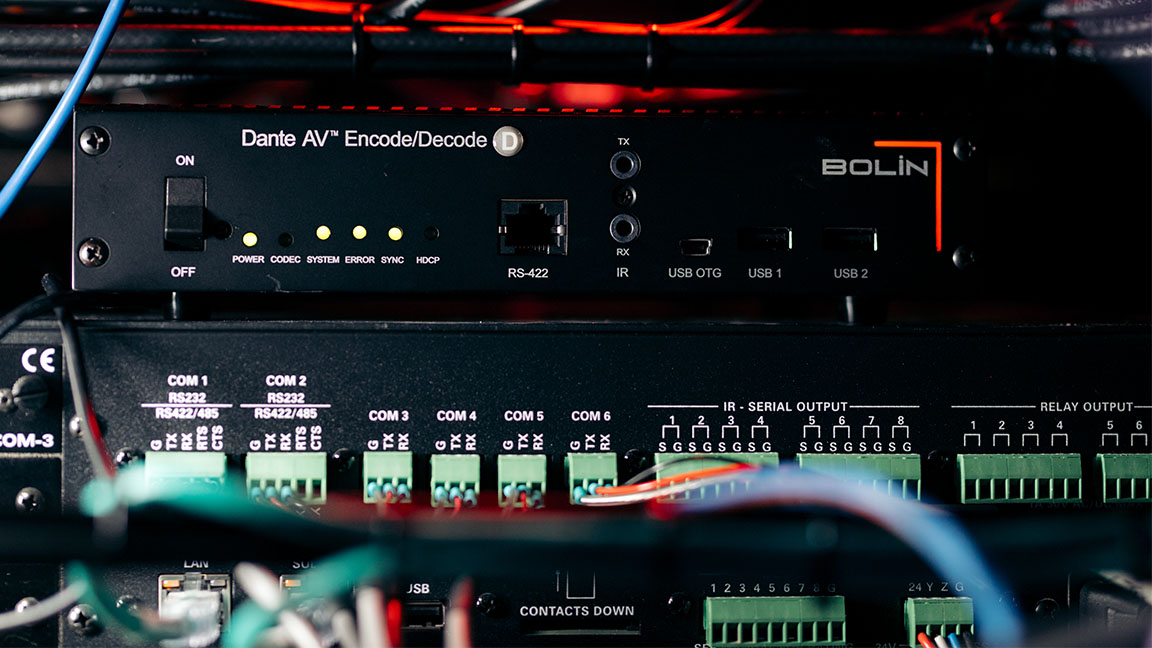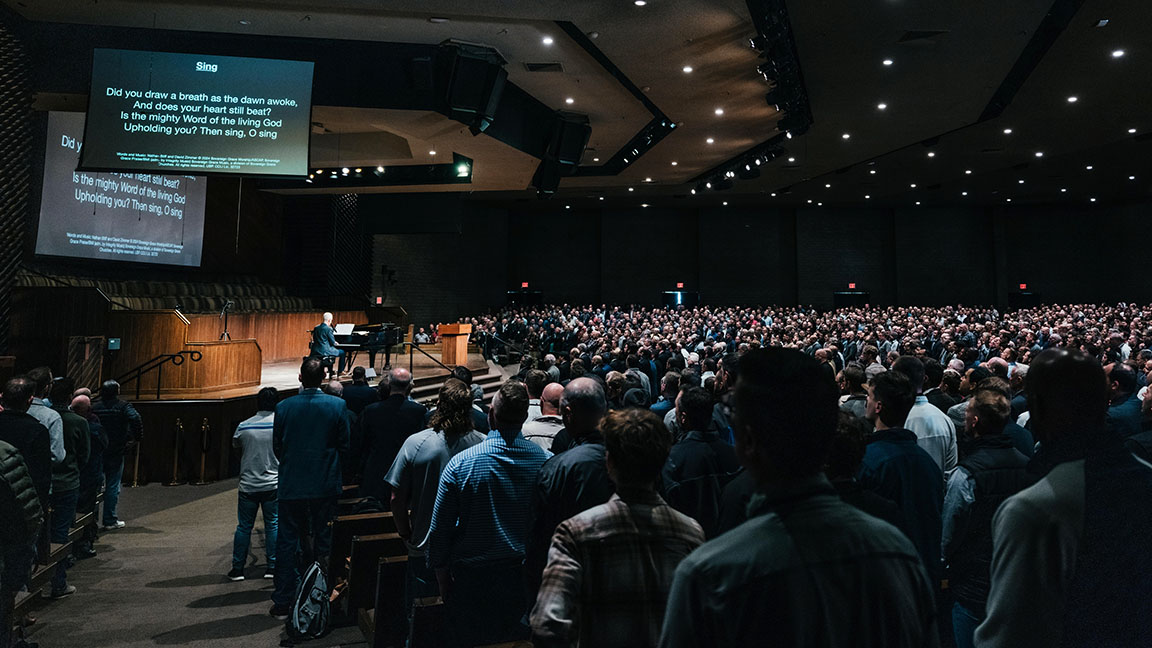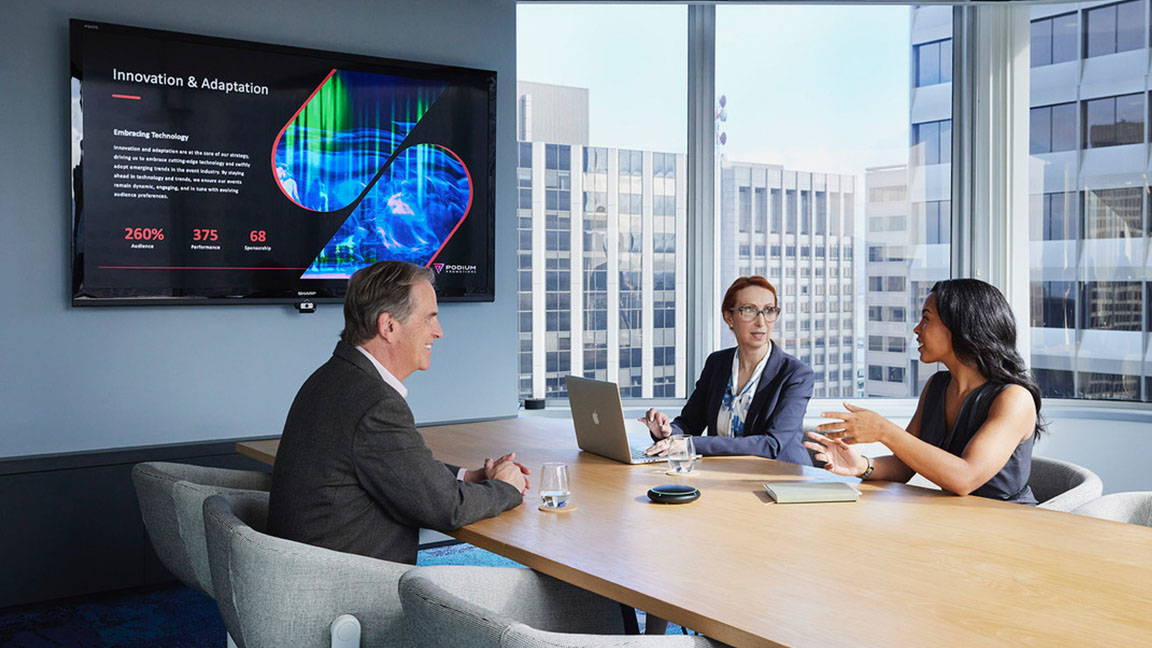It’s widely known that Dante is the de facto industry standard for audio transport in Pro AV applications. With the recent additions of Dante AV, Dante Domain Manager, and Dante Director, Audinate now offers a complete AV-over-IP platform that is inherently interoperable across thousands of products from hundreds of manufacturers, seamlessly integrating audio, video, control, and management features—and is accessible and routable anywhere in the world.
[New Dante Media Encryption Feature Improves Security]
Dante provides a robust end-to-end solution that eliminates some constraints associated with closed manufacturer ecosystems. Within the Dante ecosystem, integrators can choose the best products for a particular installation from any manufacturer and use the suite of Dante control and management tools to seamlessly manage those devices.
Interoperability Evolution
Dante’s evolution from an interoperability standard for audio transport to a complete AVoIP platform has been a years-long strategy in the making. Initially, interoperability centered around the connector itself, whether an XLR, Phoenix/Euroblock, coax, Ethernet, or others. Many systems required multiple cable types that were distance-limited and bulky to install.
Now, interoperability means much more.

A modern AV system’s usefulness is contingent on its ease of management, optimization, and control. Using multiple interfaces to control an AV system is unacceptable to most end users and integrators, whose expectations are increasingly influenced by their B2C experiences (think smartphones).
System scalability is inextricably linked to interoperability as well. Some think scaling is simply adding more endpoints of the same type. For certain applications, that’s an accurate reflection of what’s needed. However, scalability often involves new capabilities and system requirements that necessitate adding new hardware types to the AV system. Having a comprehensive range of products available is what integrators need to scale effectively.
The Dante AV family of hardware and software solutions allows manufacturers and end users to add networked video to the Dante platform. It guarantees interoperability between manufacturers while keeping discovery, configuration, and control to a single platform for all audio and video endpoints. It's also designed to run on standard 1 GbE networks alongside Dante audio devices.
Deployment Options
With more than 4,000 available endpoints, Dante AV makes it easy to break out audio to and from Dante audio devices without the need for extra hardware or format conversion. Dante AV is also designed for deployment on enterprise networks, offering scalable solutions for LANs and WANs. IT-level security and management is available via Dante Domain Manager or SaaS-based Dante Director for enhanced functionality everywhere, supporting granular user access control, alerts and audit logs, and routing media across subnets without complicated network management.
[Audinate, Lawo Collaborate on Dante Compatibility for HOME Apps]
Dante AV provides support for different codecs to meet quality, latency, bandwidth, and application needs. The family includes:
• Dante AV Ultra: delivers visually lossless video with deterministic sub-frame latency for
use cases where the highest quality, tightly synced audio and video is required.
• Dante AV-A: designed for one-to-many high-quality, ultra-low latency commercial AV
distribution and IMAG applications.
• Dante AV-H: best for limited bandwidth environments and applications that incorporate video software, including conferencing, lecture capture, and streaming.
The brilliance behind Dante AV is that it treats video devices the same as audio endpoints, using the already-familiar Dante Controller software as a one-stop shop for managing all AV routing, with separate, independently routable streams for audio and video. This implementation eliminates breakout boxes, adapters, and cables—all that users need to do is connect their Dante AV devices to a switch via a standard Ethernet cable.
With Dante’s built-in device discovery, new endpoints appear in Dante Controller for media routing. The single control management plane allows for universal configuration of devices, while a single API supports programming for all Dante products, allowing users to change routing and configuration using external control interfaces or commands.
Once the system is installed, the signal routing information is stored in the Dante-enabled devices, allowing the Dante ecosystem to run without connected computers. Users don’t have to worry about re-establishing routes when a device is moved or power cycled; it “just works,” saving time and setup costs.
A Case Study in Grace
In Southern California, Grace Community Church has come a long way from its humble beginnings in the 1950s. Today, the non-denominational, evangelical megachurch comprises a 3,000-seat worship center as well as the original 300-seat chapel, plus several small outbuildings, a family center, children’s center, Master’s Seminary, and a tower featuring five large classrooms. To streamline its AV management and keep the focus on worship experiences, Grace Community Church has deployed a large, Dante-based system throughout the campus, including video capabilities using Dante AV.
Recently, the church created a documentary slated for theatrical release, but wanted to broadcast the premiere campus-wide. Not knowing how large the audience would be for such a venture, the church felt it prudent to have the worship center and several overflow rooms prepared to receive guests. It was decided that the documentary needed to be broadcast in 4K for maximum effect—but while Grace Community Church had a pre-existing video distribution system, it could not deliver video reliably.

The church’s AV team deployed nine Bolin D20 Dante AV Ultra transceivers throughout the campus to facilitate the live video stream from the sanctuary to overflow rooms in the satellite buildings. Bolin’s D20 Series, which can be programmed as an encoder or a decoder, are single video channel networked AVoIP transceivers that are fully compatible with Dante audio devices within a Dante ecosystem like the one in place at Grace Community Church.
Each transceiver supports up to 4K60 streaming with ultra-low latency over a standard gigabit network, and offers embedded audio output via HDMI or SDI as well as PTZ camera movement control via IP or IR pass-through. Based on the pre-existing SDI infrastructure, the church installed three D20H models (HDMI) and six D20S units (SDI) across the campus.
[The Integration Guide to Dante-Enabled AV]
The premiere at the church was a huge success, and audience reactions to the AV experience were highly favorable. The power of being able to independently route the audio and video streams while guaranteeing clock synchronization provided the AV team with the tools needed to route de-embedded audio from the main feed and resynchronize with the video stream before inputting the signal into six video matrices serving the overflow rooms and the three large screens in the family center.
As the Grace Community Church install illustrates, Dante's strength lies in being manufacturer-agnostic, allowing integrators to use their preferred devices from more than 550 Dante licensees. No special switches are needed, even for video. And because it's designed for standard 1 GbE connections, Dante is easy to install, configure, administer, manage, and scale for Pro AV systems.

